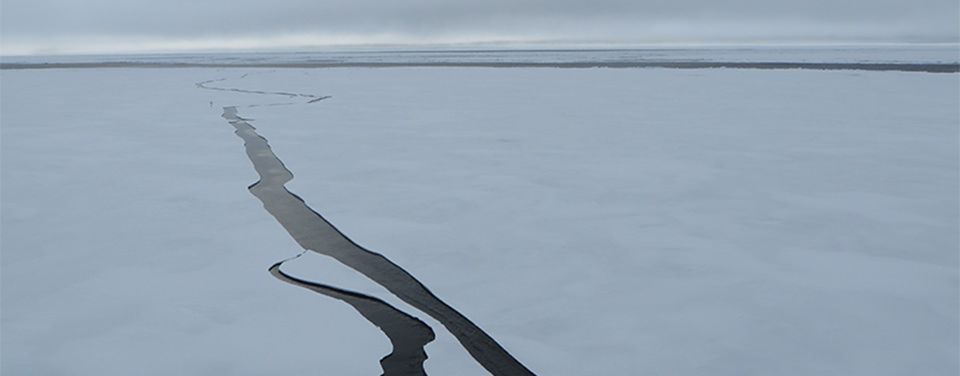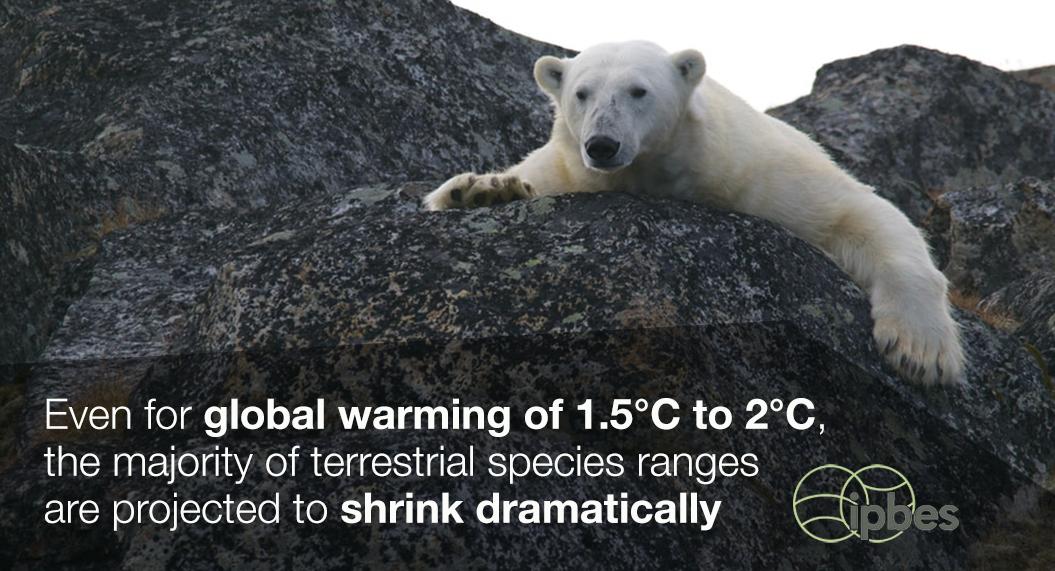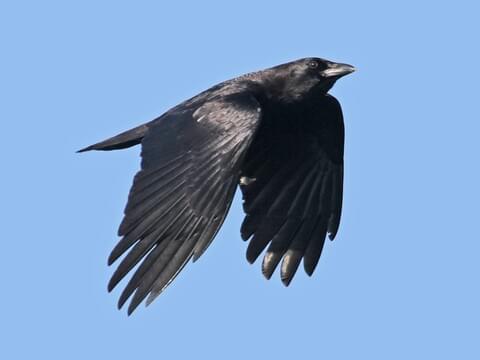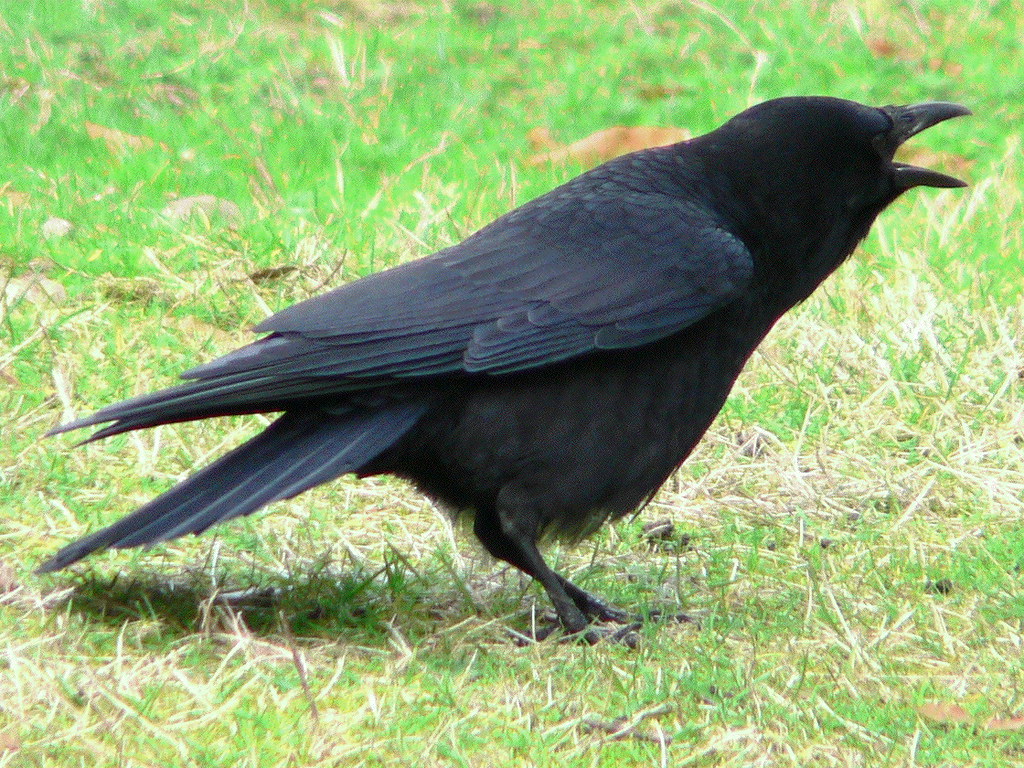"If men had wings and bore black feathers, Few of them would be clever enough to be crows."
Henry Ward Beecher
Crows love cheeseburgers. And now they’re getting high cholesterol.15:50 26 august 2019
Source:
nationalgeographic.comAngry birds: Indian man is attacked every day for three years by CROWS 'bent on vengeance' after one of their chicks died in his hands as he tried to save itShiva Kewat, from Madhya Pradesh, India, now has to carry a stick to shoo away the angry crows. Three years ago he tried to save a chick after it got stuck on iron netting but the baby bird died.

© Photograph by Andrea Townsend
Scientists fed cheeseburgers to crows to see whether eating humans' leftovers affected the birds' survival.
As a child, Andrea Townsend loved feeding he
Scientists fed cheeseburgers to crows to see whether eating humans' leftovers affected the birds' survival.
PHOTOGRAPH BY ANDREA TOWNSEND
ANIMALSWEIRD & WILDCrows love cheeseburgers. And now they’re getting high cholesterol.
But it’s not clear that eating ‘people food’ is necessarily bad for urban birds.
3 MINUTE READ
BY
LIZ LANGLEYPUBLISHED AUGUST 26, 2019
AS A CHILD, Andrea Townsend loved feeding her backyard sparrows and chickadees, but she wondered if it was good for them.
Townsend is now an ornithologist at Hamilton College in Clinton, New York, and she still cares about what birds are eating. Usually she gives them natural treats like unsalted peanuts, but for research purposes she tried a popular human food: cheeseburgers.
In a study published today in the journal The Condor, Townsend and her team show how urban living affects the health of American
crows, including their cholesterol, and what happened to a rural population when burgers became part of their diet.
Crows Can Has Cheezburger?
Like other successful urban wildlife, crows survive in part by eating our food. Often that means eating whatever they find in our trash, including processed foods not found in nature. (
Learn why crows are among the smartest birds.)
Previous studies had found that wildlife in urban or heavily touristed areas, like house sparrows and rock iguanas, respectively, had elevated cholesterol levels.
TODAY’SPOPULAR STORIES
 TRAVEL
TRAVELSee the best pictures of summer from Nat Geo photographers
 ENVIRONMENT
ENVIRONMENTHurricane Dorian—the science behind the dangerous storm
 ANIMALS
ANIMALSCenturies of breeding have reshaped dog brains—here’s how
Townsend set out to learn whether urbanized crows also had higher cholesterol levels than their rural cousins.
First the team tested 140 crow nestlings in Davis, California, along a gradient that went from urban to rural over a span of three years. Indeed, the more urban the bird, the higher its cholesterol.
Next they supplemented the diet of a crow population in rural Clinton, New York, with a high-cholesterol human food, cheeseburgers, calling in orders of 100 McDonald’s cheeseburgers at a time.
“They thought we were joking,” Townsend says.
The Clinton area crows gobbled up the three burgers a day that researchers put under nesting trees, with some adults delivering burgers to the nestlings and some eating or storing the food for themselves.
Comparing the cholesterol and survival rates of the burger-eating crows with those of nearby crows who were weren’t supplemented with fast food, the team found that cholesterol levels did not have a detectable effect on the birds’ survival.
WATCH: CLEVER RAVEN OUTSMARTS A TRASH CAN
Ravens—close relatives of crows—may have walnut-sized brains, but these intelligent animals have learned to adapt quite well to living among humans.
However, regardless of their cholesterol levels, urban birds did have lower survival rates than rural birds. It's unknown why urban birds didn’t fare as well, though many factors such as car collisions, disease, predators and poor food quality at critical developmental stages may come into play.
The nestlings who were about to fledge from the nest with higher cholesterol after eating the burger-rich diet actually had better body condition than their country cousins. Body condition in a scientific sense, though, just means that the birds weighed more for their size.
“If you’re a chubby crow, essentially, that’s considered to be good condition,” Townsend says, noting that this definition can be the subject of debate.
In small doses, cholesterol is a good thing, Townsend notes. It’s essential to body function and is a part of cells’ structure, acting as a precursor for hormones and a component of bile, which breaks down fat, she says. It’s in excess that it’s associated with disease.
For humans, it’s later in life that high cholesterol comes home to roost, so to speak, in the form of heart disease. Crows, “which can live more than 15 years in the wild, might develop disease later in life,” but this needs further research, Townsend says.
The American crow (Corvus brachyrhynchos) has become a common sight in urban and suburban areas across North America. It will eat almost anything—from insects and seeds to garbage and even carrion.
We Urban Animals
Kaeli Swift says she’s glad not to have to cringe every time she sees a crow dumpster diving. Swift is a post-doctoral researcher at the University of Washington who has spent years observing crows’ behavior. (Related:
Do Crows Hold Funerals for their Dead?)
Swift, who wasn’t involved in the study, says the researchers did a great job of showing that the abundance of “people food” in urban landscapes is not doing crows harm, at least not in the short term.
Not that cheeseburgers should be their steady diet—if you feed backyard crows, giving them something as natural as you can get is the preferable thing, says Townsend, who doesn’t want to discourage feeding birds.






 © Photograph by Andrea Townsend
© Photograph by Andrea Townsend